The Impact of Airline Sustainability on Stansted Airport

Environmental Impact
Stansted Airport, one of the busiest airports in the UK, is increasingly focusing on airline sustainability to mitigate its environmental impact. The airport is implementing measures to reduce carbon emissions, noise pollution, and waste, while promoting energy efficiency and recycling. The adoption of cleaner, quieter aircrafts and the use of sustainable aviation fuels are key strategies in this regard. The airport is also investing in electric ground handling equipment and encouraging airlines to reduce their auxiliary power unit usage. These initiatives not only contribute to the airport's sustainability goals but also align with the broader global commitment to combat climate change. However, the challenge lies in balancing the growing demand for air travel with the need for environmental preservation. Stansted Airport's efforts in airline sustainability demonstrate a significant step towards achieving this balance, setting a precedent for other airports worldwide.
Economic Impact
The impact of airline sustainability on Stansted Airport has significant economic implications. As airlines adopt more sustainable practices, such as using biofuels or improving fuel efficiency, operating costs can be reduced. This can lead to lower ticket prices, potentially increasing passenger numbers and boosting revenue for Stansted Airport. Furthermore, sustainability initiatives can attract environmentally conscious customers and airlines, enhancing the airport's reputation and competitive advantage. However, these initiatives also require substantial investment in new technologies and infrastructure. The airport may need to increase charges for airlines, which could deter some carriers and passengers. Additionally, the transition towards sustainability could disrupt operations, affecting the airport's profitability in the short term. Therefore, while airline sustainability can bring economic benefits for Stansted Airport, it also presents financial challenges. The airport must carefully manage this transition to ensure its long-term economic viability.
Regulatory Compliance
Regulatory compliance is a critical aspect of airline sustainability, particularly at major hubs like Stansted Airport. The airport is subject to numerous environmental and safety regulations, which are designed to mitigate the impact of aviation on the environment and ensure the safety of passengers and staff. These regulations cover a wide range of areas, from emissions and noise pollution to waste management and energy efficiency. Compliance with these regulations is not just a legal obligation, but also a key part of Stansted's commitment to sustainability. The airport has implemented a number of measures to reduce its environmental footprint, including the use of renewable energy sources, recycling programs, and initiatives to reduce water consumption. However, the challenge of balancing operational efficiency with sustainability remains. As regulations continue to evolve, Stansted must continue to innovate and adapt to ensure it remains compliant while also striving to achieve its sustainability goals.
Sustainable Practices
Stansted Airport, one of the busiest airports in the UK, is making significant strides towards sustainability. The airport's management is keen on reducing its carbon footprint and has implemented several sustainable practices to achieve this goal. These include the use of renewable energy sources, waste management systems, and efficient water usage. The airport has also invested in electric vehicles for ground operations and encourages airlines to use newer, more fuel-efficient aircraft. The impact of these sustainable practices is significant. Not only do they contribute to the global fight against climate change, but they also make economic sense. Airlines operating at Stansted are seeing reduced operational costs due to lower fuel consumption and waste disposal fees. Furthermore, the airport's commitment to sustainability is attracting environmentally conscious passengers and airlines, thus boosting its reputation and competitiveness. In conclusion, Stansted Airport's sustainable practices are having a positive impact on both the environment and the airport's bottom line. This serves as a model for other airports worldwide to follow.
Community Relations
The sustainability efforts of airlines have a significant impact on Stansted Airport, particularly in terms of community relations. As airlines adopt more eco-friendly practices, the local community benefits from reduced noise and air pollution, enhancing the quality of life for residents. Furthermore, sustainable airlines often engage in community outreach programs, fostering a positive relationship with the local population. For instance, airlines may sponsor local events or contribute to community development projects, thereby improving their public image. Additionally, sustainable practices can lead to operational efficiency, potentially resulting in fewer flight delays and cancellations, which is a direct benefit to passengers. Therefore, the push towards airline sustainability not only contributes to environmental conservation but also strengthens community relations at Stansted Airport. It is a win-win situation that other airports and airlines should strive to emulate.
Passenger Experience
Airline sustainability is increasingly becoming a significant factor in the passenger experience at Stansted Airport. As airlines strive to reduce their carbon footprint, passengers are reaping the benefits of cleaner, more efficient travel. The introduction of newer, fuel-efficient aircraft and the implementation of sustainable practices like recycling and waste reduction have not only improved the airport's environmental impact but also enhanced passenger comfort and convenience. For instance, quieter engines reduce noise pollution, contributing to a more peaceful journey. Moreover, airlines' commitment to sustainability often extends to in-flight services, with many offering locally sourced food and beverages, reducing the carbon emissions associated with long-distance transportation. Furthermore, the airport's efforts to promote public transport and electric vehicles for airport transfers also contribute to a greener travel experience. Overall, the focus on sustainability at Stansted Airport is transforming the passenger experience, making air travel more environmentally friendly and enjoyable.
Airline Partnerships
Airline partnerships play a crucial role in enhancing the sustainability of Stansted Airport. These collaborations allow airlines to share resources, reduce operational costs, and improve their environmental footprint. For instance, airlines can coordinate flight schedules to reduce fuel consumption and carbon emissions. They can also share ground services and maintenance facilities, minimizing waste and energy use. Moreover, partnerships can facilitate the exchange of best practices in sustainability, such as the use of biofuels or energy-efficient aircraft. Stansted Airport, as a hub for several airlines, stands to benefit significantly from these partnerships. The airport can leverage these collaborations to meet its sustainability goals, reduce its environmental impact, and enhance its reputation as a green airport. Therefore, fostering airline partnerships is a strategic move for Stansted Airport towards a more sustainable future.
Innovation and Technology
Innovation and technology are playing a pivotal role in enhancing airline sustainability at Stansted Airport. The airport is leveraging advanced technologies to reduce its carbon footprint and promote environmental sustainability. The implementation of innovative solutions such as energy-efficient lighting systems, electric ground handling equipment, and advanced waste management systems are significantly reducing energy consumption and waste production. Furthermore, the airport is exploring the use of sustainable aviation fuels and solar power to further its sustainability goals. These technological innovations not only contribute to environmental conservation but also improve operational efficiency and cost-effectiveness. The impact of these sustainable practices is profound, positioning Stansted Airport as a leader in the aviation industry's green revolution. The airport's commitment to sustainability through innovation and technology is setting a benchmark for other airports worldwide, demonstrating that environmental responsibility and business growth can go hand in hand.
Employee Engagement
Employee engagement is a critical factor in achieving sustainability goals at Stansted Airport. The airport's commitment to sustainability is not just about reducing carbon emissions and waste, but also about creating a positive work environment that encourages employees to contribute to these goals. Engaged employees are more likely to take ownership of their roles in sustainability efforts, leading to more effective and efficient operations. For instance, they can contribute to energy-saving initiatives, recycling programs, and other green practices. Moreover, engaged employees can provide valuable insights and innovative ideas for improving sustainability. Therefore, fostering employee engagement is a strategic move for Stansted Airport to enhance its sustainability performance. This not only benefits the environment but also boosts the airport's reputation, customer satisfaction, and overall business performance. In conclusion, employee engagement plays a pivotal role in driving the success of airline sustainability at Stansted Airport.
Future Sustainability Goals
Stansted Airport, one of the UK's busiest airports, is making significant strides towards achieving its future sustainability goals. The airport is keenly aware of the impact of airline sustainability on its operations and is taking proactive steps to mitigate this. The airport's management is investing in renewable energy sources, reducing waste, and promoting recycling. They are also working closely with airlines to reduce carbon emissions and noise pollution. The airport is also exploring the use of electric vehicles for ground operations and is committed to improving public transport links to reduce car travel. These initiatives are part of Stansted Airport's broader commitment to achieving net-zero carbon emissions by 2050. The airport's sustainability goals are not only good for the environment but also make good business sense. They help to reduce operating costs, improve efficiency, and enhance the airport's reputation among passengers and stakeholders. The airport's sustainability efforts are a model for other airports worldwide.
Our Latest Blog Posts

Stansted Airport: A Guide to the Mediation Process
Stansted Airport offers a comprehensive mediation process to resolve disputes. This involves neutral third parties facilitating communication between conflicting parties, aiming to reach a mutually ...

Stansted Airport: A Guide to the Project Management Process
Stansted Airport's project management process is a meticulous blend of planning, execution, and monitoring. It involves careful coordination, risk management, and quality assurance to ensure smooth ...
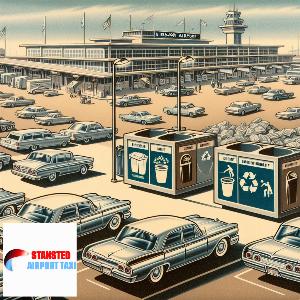
The Role of Stansted Airport in Waste Management
Stansted Airport plays a crucial role in waste management, implementing robust strategies to minimize waste. It prioritizes recycling and reusing materials, significantly reducing landfill waste an ...
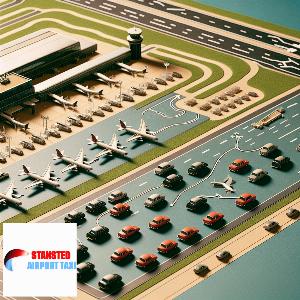
Stansted Airport: A Guide to the Redeployment Process
Stansted Airport's redeployment process is a strategic approach to optimize staff efficiency. It involves reassigning personnel to different roles or departments, based on their skills and the airp ...
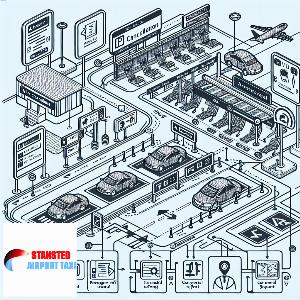
Stansted Airport: A Guide to the Cancellation Process
Navigating Stansted Airport's cancellation process can be daunting. It's crucial to understand the terms and conditions of your ticket, contact your airline promptly, and inquire about possible ref ...

The Top Restaurants at Stansted Airport
Discover top-notch dining at Stansted Airport. Enjoy exquisite meals at The Windmill, indulge in Italian cuisine at Frankie & Benny's, or savor sushi at Itsu. For quick bites, Pret A Manger and Leon ...

The Impact of Noise Pollution on Stansted Airport
Noise pollution at Stansted Airport significantly affects local communities, causing health issues and sleep disturbances. It also impacts wildlife habitats nearby, disrupting natural behaviors and ...

Understanding the Layout of Stansted Airport
Stansted Airport's layout is user-friendly, featuring one main terminal with three satellite buildings. It offers various amenities including shops, eateries, and lounges. Understanding its layout e ...

Stansted Airport: A Guide to the Crisis Management Process
Stansted Airport's crisis management process is a well-structured system, designed to handle emergencies effectively. It involves swift decision-making, clear communication, and efficient coordinat ...

Stansted AirportA Guide to the Immigration Process
Stansted Airport, a bustling hub for international travel, has a streamlined immigration process. This guide provides essential information on passport control, customs regulations, and biometric re ...

The Impact of Airline Mergers on Stansted Airport
Airline mergers have significantly impacted Stansted Airport, leading to increased traffic and expanded routes. However, they also pose challenges such as overcrowding and increased competition, po ...

Stansted Airport: A Guide to the Termination Process
Stansted Airport provides a seamless termination process for travelers. The airport ensures efficient check-out procedures, clear signage for exits, and convenient transportation options. It's a tr ...

The Role of Stansted Airport in Ecosystem Restoration
Stansted Airport plays a crucial role in ecosystem restoration by implementing sustainable practices. It actively reduces carbon emissions, manages waste responsibly, and promotes biodiversity, con ...
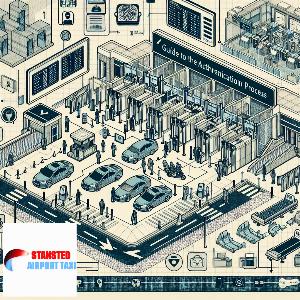
Stansted Airport: A Guide to the Authentication Process
Stansted Airport's authentication process ensures passenger safety and smooth travel. It involves passport control, security checks, and boarding pass verification. Understanding this process can h ...

The Role of Stansted Airport in Disaster Management
Stansted Airport plays a crucial role in disaster management, serving as a hub for emergency response. It facilitates swift transportation of relief materials, rescue teams, and medical aid, ensuri ...

The Impact of Airline Globalization on Stansted Airport
Airline globalization has significantly impacted Stansted Airport, enhancing its international connectivity. It has attracted numerous global airlines, boosting passenger traffic and fostering econ ...
Blogs Pages
The Role of Stansted Airport in Crisis Management
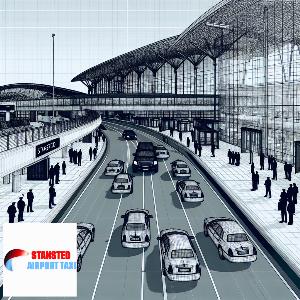
Blog about The Role of Stansted Airport in Crisis Management...
The Impact of Airline Sustainability on Stansted Airport

Blog about The Impact of Airline Sustainability on Stansted Airport...
The Role of Stansted Airport in Climate Change Mitigation

Blog about The Role of Stansted Airport in Climate Change Mitigation...
Stansted Airport: A Guide to the Succession Process

Blog about Stansted Airport: A Guide to the Succession Process...
The Impact of Airline Globalization on Stansted Airport

Blog about The Impact of Airline Globalization on Stansted Airport...
Stansted Airport: A Guide to the Risk Management Process

Blog about Stansted Airport: A Guide to the Risk Management Process...
Stansted Airport: A Guide to the Recruitment Process
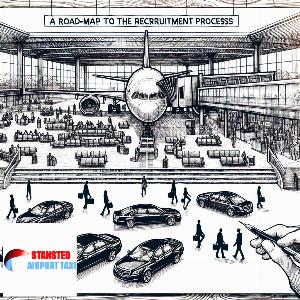
Blog about Stansted Airport: A Guide to the Recruitment Process...
Stansted Airport: A Guide to the Operational Excellence Process
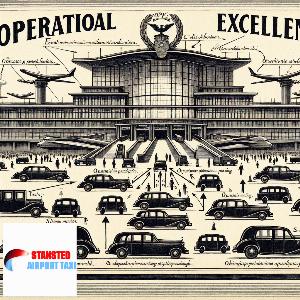
Blog about Stansted Airport: A Guide to the Operational Excellence Process...
The Impact of Airline Excellence on Stansted Airport

Blog about The Impact of Airline Excellence on Stansted Airport...




